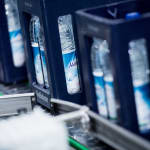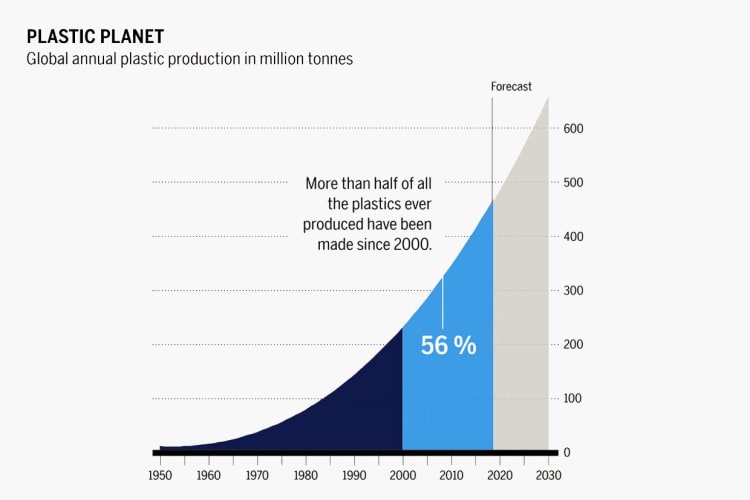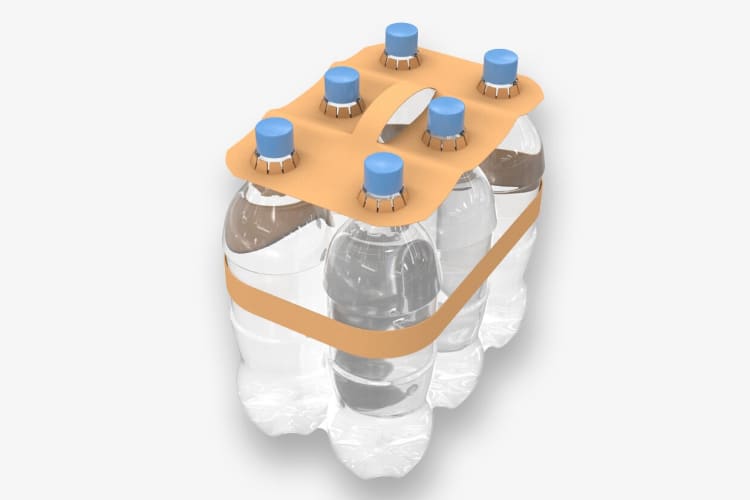
There is more and more plastic waste, while at the same time the market for recycled PET has been almost bought out. What's going on? How are governments reacting to the situation? Join us on a journey of discovery into the world of laws on plastic packaging and their recycling.
“Our planet is drowning in plastic pollution,” says the United Nations’ Environment Programme (UNEP). We are all familiar with pictures of mounting plastic rubbish tips and plastic waste in the oceans. Today, according to the OECD, the world produces some 460 million tonnes of plastic every year. It was only half as much just 20 years ago, and experts anticipate that the figure will rise to 800 million tonnes in less than the next twenty. Packaging makes up a good 40 percent of this quantity.

Since 2000, more plastics have been produced than in the 50 years before. The output of plastics continues to explode.
High-grade plastics can actually be directed pretty well into a closed loop. The bottle-to-bottle cycle, for instance, in which PET bottles are recycled into rPET bottles, is far advanced. The billions of PET bottles that end up on the world’s rubbish tips each year would be a huge source of raw materials. Since Krones offers beverage producers solutions for filling beverages in PET, among other things, but has also committed itself to sustainability, the avoidance, reduction, recycling and recirculation of plastic are key issues. Under the European Circular Economy Stakeholder Platform Krones has undertaken to meet quality targets covering different aspects of the packaging loop.
The markets for a circular economy in plastic are not functioning that well yet, with the proportion of recycled material in production not even reaching ten percent globally. Until recently many countries were exporting large portions of their plastic waste, mainly to Asia. Since China imposed import restrictions in 2018, however, and with other countries following suit, the problem of plastic waste has been on our own front doorstep. Governments are now trying to stem the flood with rules and regulations. They can call on a whole toolbox of taxes, subsidies, quotas, material permits or binding eco-friendly design standards. They can, for instance,
- introduce extended manufacturer responsibility and levy charges on non-recyclable plastic or on plastic waste, the dual system in Germany being one such example;
- prohibit certain plastic articles;
- raise recycling rates through
-
- mandatory collection quotas
- introducing deposit systems
- mandatory collection quotas
In Germany, for instance, 98 percent of bottles requiring a deposit are collected and 45 percent of the collected PET bottles are recycled into PET containers
- encouraging markets for recycling products through mandatory quotas for the proportion of recycled material in the finished product;
-
reducing the quantity of plastic through binding reuse quotas.
“Krones has the technologies for all these paths,” says Manuel Grund, who looks after the subjects of recycling and sustainability in Marketing and monitors how the market is moving. “We handle returnable and single-use PET as well as rPET, have recycling systems for a range of plastics, not just PET, and in LitePac Top also offer plastic-free secondary packaging.” He reckons that the statutory requirements which have been proposed or already implemented will entail significant changes for many companies, however, giving an example: “Some of the proposed legislation sets out very ambitious targets for collection and recycling quotas. Often, though, the authorities have little infrastructure for deposit systems, so the industry has to build logistics capacity before it can receive returns.”

LitePac Top offers a solution for secondary packaging of PET bottles without any additional plastic.



